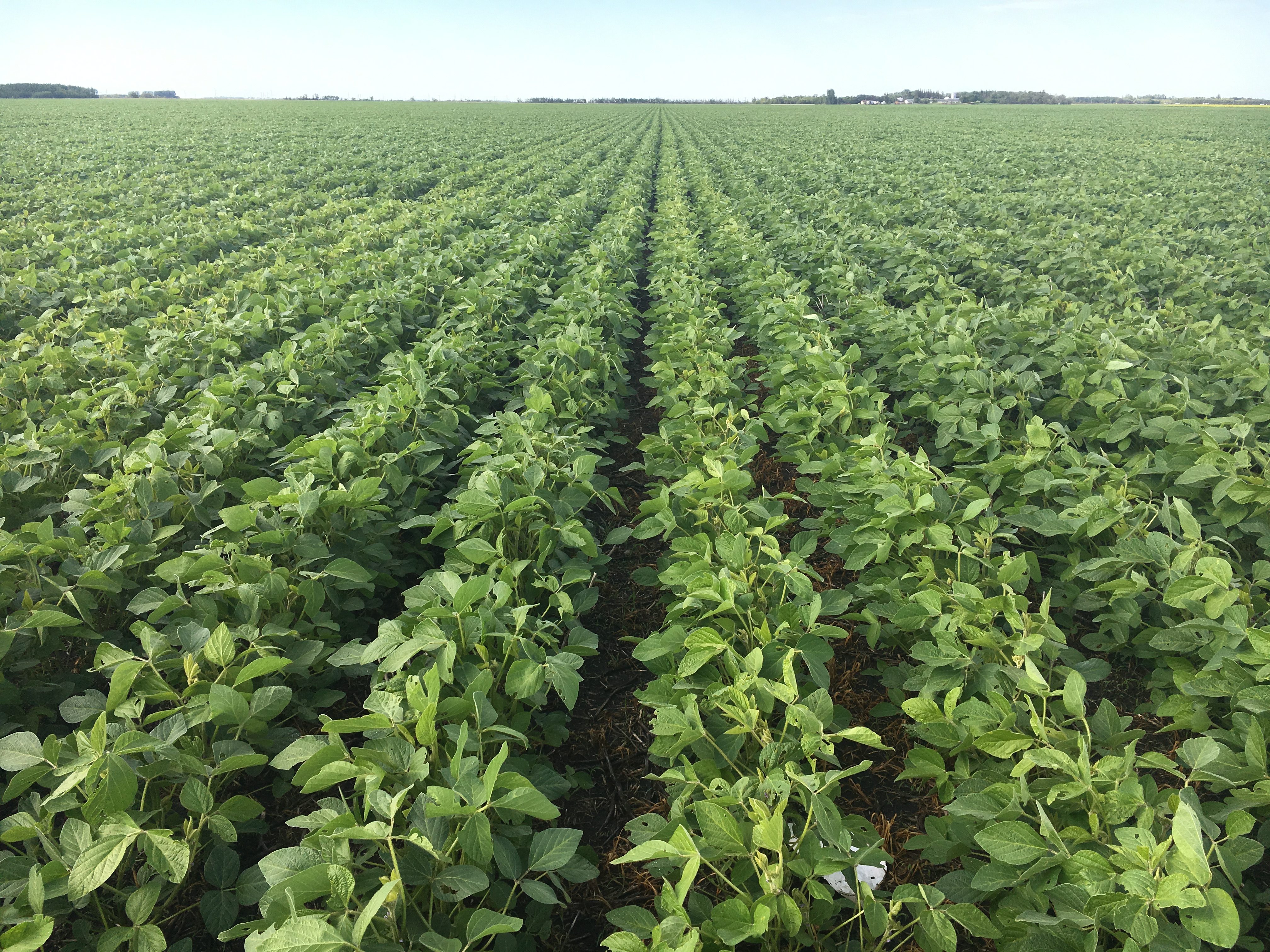Ron Davidson, Executive Director, Soy Canada
CANADIAN SOYBEAN SECTOR STANDS ALONE IN ENDURING THE BRUNT OF POLITICAL DECISIONS BY THREE GOVERNMENTS
For two successive crop years, the prospects of Canadian soybean producers have been jeopardized by the cumulative repercussions of political decisions taken by the governments of the United States, China and Canada.
Problematic Government Decisions
These decisions and their associated repercussions have included the following:
- threats by S. President Donald Trump in early 2018 to initiate a trade war with China in an endeavour to achieve objectives unrelated to the agriculture sector;
- identification of soybeans by the Chinese government as a sensitive and highly vulnerable U.S. target for a retaliatory tariff;
- reports on May 2, 2018 by U.S. exporters that Chinese importers had ceased the purchase of U.S. soybeans;
- imposition on July 6, 2018 of U.S. import tariffs on Chinese industrial products;
- immediate retaliation by China including a 25% retaliatory import tariff on U.S. soybeans;
- collapse by 21% between May 21 and July 6, 2018 of soybean futures prices on the Chicago Board of Trade;
- announcement by the S. government on August 27, 2018 of a compensatory payment of US$1.65 per bushel to indemnify American soybean producers for the estimated impacts of unjustified retaliatory tariffs (note: addition of the US$1.65 compensatory payment to the US$8.48 average farm price resulted in U.S. producers receiving US$10:13 per bushel for the 2018 harvest, a US$0.65 per bushel premium over the US$9.33 per bushel average farm price for 2017);
- detention on December 1 by Canadian officials, at the behest of the S. government, of high-profile Chinese citizen and Huawei executive Meng Wanzhou;
- announcement by the S. government on July 29, 2019 of a compensatory payment for the 2019 crop based on estimated impacts of unjustified retaliatory tariffs of up to US$150 per acre (equivalent of up to US$3.20 per bushel for an all-soybean farm with an average yield of 46.9 bushels per acre) to ensure farmers will not stand alone;
- announcements by the S. government on January 31 and July 25, 2019, of the allocation of US$34,632,165 to the American Soybean Association for investment in a a comprehensive marketing effort by the U.S. soybean industry that has increased exposure in more than 50 international markets; and,
- announcement by President Trump on October 11, 2019, of a Chinese commitment to purchase US$40 billion to US$50 billion annually in agriculture products from the S.
Injurious Repercussions of Government Decisions
The injurious impacts of these political decisions on the Canadian soybean sector include the following:
- reduction of Canadian soybean selling prices in both the Canadian and global marketplaces to remain competitive with S government- supported American exports:
- $43.67 per tonne contraction in producer prices for Manitoba soybeans between May, 2018 and August, 2019;
- $61.82 per tonne contraction in producer prices for Ontario soybeans between May, 2018 and August, 2019; and
- $46.00 per tonne contraction in producer prices for Quebec soybeans between May, 2018 and August, 2019;
- major distortion of traditional commercially-based trade flows in both the Canadian and global marketplaces:
- reduction of 1 million tonnes (69%) in soybean exports to the vitally important European Union countries between crop year 2017/2018 and crop year 2018/2019;
- dramatic but one-occasion increase of Canadian exports to China to 2 million tonnes between September and December 2018;
- cessation as of January 2019 of purchases of Canadian soybeans for processing by China, by far the world’s largest market for soybeans; and
- unprecedented increase from 383,105 tonnes to 958,040 tonnes in imports of S. subsidized soybeans into Canada thereby displacing Canadian produced soybeans and accounting for the equivalent of 47% of the soybean crush in this country; and
- uncertainty that the critically important Chinese market (accounting for 57% of global imports) will be open to Canadian crushing beans during the 2019/2020 crop
Canadian Government Missing-In-Action
Taking into account the serious price and trade injury arising from government decisions, the soybean sector initially sought compensatory support from the Canadian government in September 2018. This request has been reiterated both verbally and formally as early concerns progressively transitioned into lived reality.
Nevertheless, unlike the U.S. government in the case of American soybean producers, and the Canadian government in the case of industrial products and other commodities, the federal government has not been responsive to the prospect that market-based soybean production in Canada, this country’s third most valuable field crop, may be replaced by subsidized production from the other side of the Canada-U.S. border.
Soy Canada will continue to advocate on this topic, notwithstanding the suggestion that producers respond to the price-reducing and trade-distorting impacts of the political decisions enumerated above by switching other crops.
SOY CANADA MARKET DEVELOP MISSION TO THE EUROPEAN UNION
Soy Canada is organizing a trade mission to Belgium, Germany, Italy and the Netherlands from November 21–29. Promoting both commodity and identity-preserved soybeans, the program in each country will include a seminar for importers and end-users, a business-to-business export café and site visits.
CANADIAN SOYBEAN INDUSTRY RESEARCH AND INNOVATION STRATEGY WORKSHOP
Three years have passed since the first Canadian Soybean Industry Research and Innovation Strategy Workshop convened in June 2016. Taking into account production and marketing experiences since 2016 as well as varied research funding organization responses to recent public sector consortia research proposals, Soy Canada is organizing a follow-up soybean research and innovation workshop to be held at the Toronto Airport on February 5, 2020.

